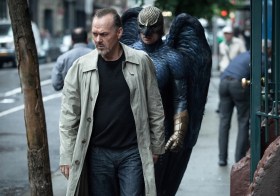There is an abundance of structure and practicality to be found for the artist who regularly taps into thinking like an athlete. From the macro long-term goal setting to the micro day-to-day routine, this experimental modelling can provide welcome direction – something an artist’s everyday existence can otherwise very easily lack.
A question that naturally arises as a result of this contemplation – as it does for athletes themselves – is whether to focus on building one’s strengths or improving one’s weaknesses when pursuing a goal.
Regardless of your role within the industry, you likely have ambitions, and you’d enjoy seeing yourself inching steadily towards them.
Read: How to thrive with performance anxiety
While every artist’s (and athlete’s) journey is unique and should be responded to as such, there are two key questions from which we can begin to craft a reply:
- What is our central goal?
- Where are we currently situated on this journey?
Working closely with a qualified life or career coach can obviously facilitate a deeper dive into this discovery and how we can ultimately translate discoveries into action, but even simply percolating on these prompts will separate us from the 99% of artists who neglect to do so.
What is your central goal?
Our goals will organically shift and evolve over the course of our lives, but for now, bring to mind your current career goal. If you’re up for investing the extra minute to physically write this down, know your humble investment will pay dividends: research by psychology professor, Dr Gail Matthews, has shown that actually writing down your goal improves the likelihood of achievement by 42% (sorry technophiles, this applies only to writing by hand).
actually writing down your goal improves the likelihood of achievement by 42%
Would you consider this particular goal to be a long- or short-term aspiration? For the purposes of this exercise, we’ll define a long-term aspiration as having a timeline of twelve months or greater, and a short-term aspiration as being anything less than that.
Perhaps you’re a First AD ultimately striving to put yourself in the director’s chair. Depending on your given circumstances this could be only a few months away (woohoo you!), but this would likely fall into the long-term category if more experience is required.
As a crude generalisation, long-term goals typically tend to demand an improvement of weaknesses in order to foster a greater balance and therefore sustainability throughout our pursuit. Conversely, short-term goals typically tend to favour a doubling-down on strengths for a more concentrated period, as longevity is less of a concern.
Where are you currently placed on your journey?
The second consideration is your progress on the path towards your specific target. Have you only just taken the first few steps, or are you now approaching the finish line?
Again, as a rough rule-of-thumb, we generally require a more multi-faceted approach in the early days than we would later down the line. As we have more slack in the system, it makes sense to build a solid foundation at the beginning. We can visualise this as a pyramid: our workflow becoming more and more refined as we near our destination.
long-term goals tend to demand an improvement of weaknesses… Conversely, short-term goals typically tend to favour a doubling-down on strengths for a more concentrated period
If you’re a Producer embarking on establishing your own groovy-sounding production company, there’s probably a fair bit more you’re having to juggle on day one then you will when your doors are open for business, and it’s helpful to have this awareness.
So what does this all mean in practice?
Your responses to these two considerations should help clarify the focus of your artistic ‘training’ at every step towards your vision. For instance, if your answers seem to suggest you’re in the first minutes of your metaphorical marathon, you’re likely to need a good balance – or perhaps even a greater ratio of weakness-improving to strength-building. If, on the other hand, you’re in the last ten meters of your metaphorical sprint, weakness-improving might actually be distracting and consequently unhelpful.
As noted, this is far more nuanced on a case-by-case basis, but as a starting point, can offer a practical framework for those of us who avoid systematic goal-setting in fear of that dreaded overwhelm of not knowing where to even begin.
Professional athletes wouldn’t dream of tackling their ambitious aspirations without intentionally defining the optimum equilibrium of strength-building and weakness-improving required. So arm yourself with the same insights, step into the artist-athlete you are, and let’s start kicking those goals!





